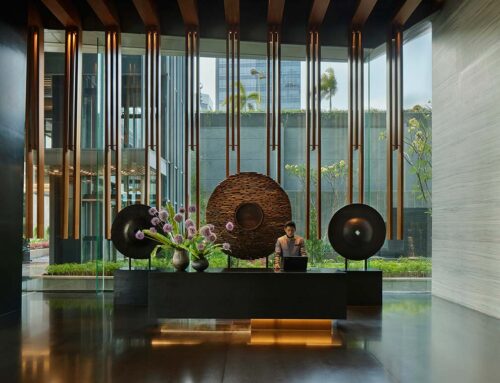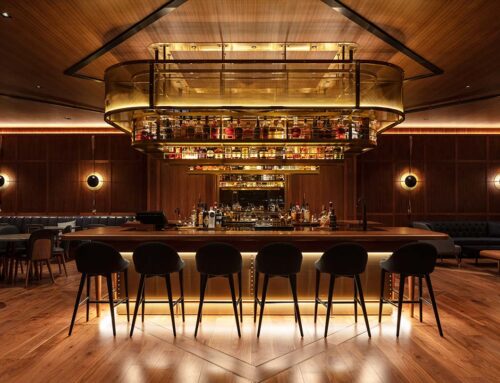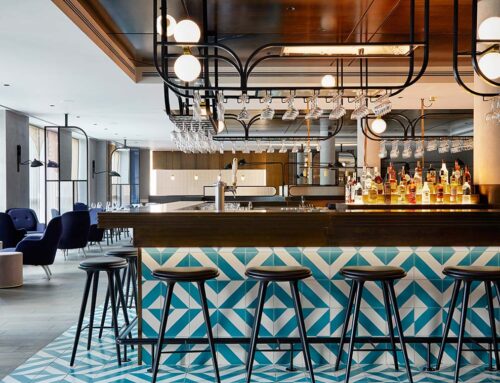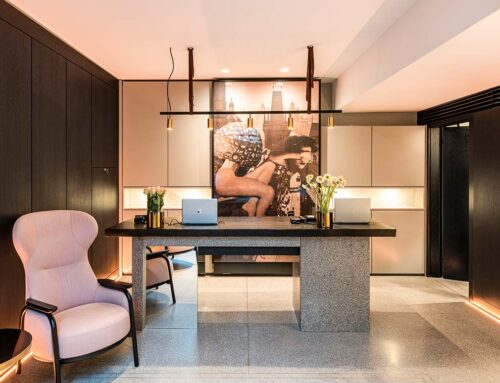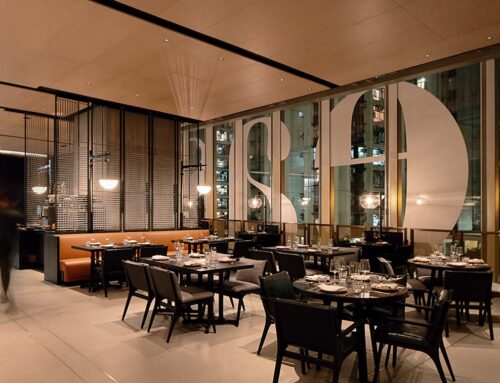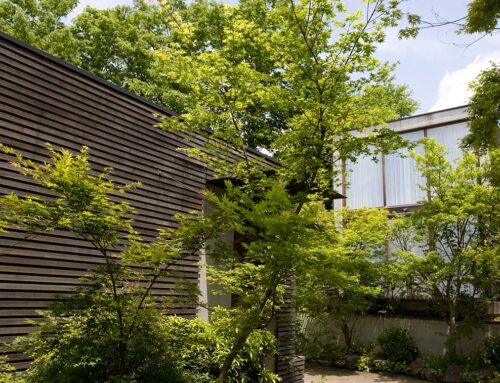Juxtaposing Heritage and Modernity.
The Dixon is one of the most memorable hotels in London. Housed in a historic Grade ll listed building which was previously a magistrates court, and extended to provide additional accommodation, the hotel combines its formidable past with the vibrancy and cultural diversity of the Tower Bridge district today where sightseers, artists, office workers and local residents rub shoulders all year round.
twenty2degrees Design Partnership led the interior design project, from the imposing lobby and the court room itself, now reinvented as the bar, to the restaurant, function rooms and 193 guestrooms, working in collaboration with Consarc Design Group on the listed parts where careful restoration was required.
The building was originally completed in 1906 by the celebrated, yet enigmatic architect John Dixon Butler from whom the present-day hotel takes its name and it comprised a courtroom, police station and jail cells. Back then, the area around Tower Bridge was a centre of light industry and international trade thanks to the nearby docks; famous artists were occasional residents, there were drinking dens a-plenty and while there was money to be made, poverty and criminality were rife. It was this diverse and colourful canvas that twenty2 degrees inherited when they approached the challenge of balancing history and listed building constraints with the requirements of today’s luxury hotel guests.
Joe Stella, Creative Director of twenty2degrees, explains: “We were determined to be respectful to the building but we also had to respond to the fact that it now has to operate in a completely different way from what was originally intended. First and foremost, we had to think about how modern guests would experience the building and the need to create a journey through it.”
This journey begins with an imposing lobby, once the court’s processing hall, and a centrally placed grand staircase which sweeps up to parallel galleries. To one side of the lobby, a former clerk’s office has been reinvented as an intimate reception area where a metal-clad table is engraved with an intriguing ensemble of local scenes. The imperiousness of the space is softened by a specially designed carpet inspired by the flow of the River Thames nearby, while certain hallmarks of the design are established. These include the sometimes witty, sometimes solemn, details that connect the past with today, such as artworks incorporating original cell keys and holding benches bearing notes from detainees etched into their surfaces. twenty2degrees also worked with art consultants Peter Millard & Partners to create a vast collection of paintings and illustrations that re-work floral motifs – a nod to the area’s past – into disruptive modern images. A triptych of venerable local residents presents novelist George Orwell, explorer Ernest Shackleton and actor Charlie Chaplin with a floral twist while the architect himself presides over the main staircase. With no known portrait of Dixon, the creator of the building is boldly reimagined, his head is replaced by flowers.
The listed courtroom has become the hotel bar, a unique space where the partitions that once separated judge, jury, prosecutor and defendants have been given new purpose in defining a series of nooks. The room flows towards a sunken bar where once the judges sat, now watched over by grainy mugshots of the convicted wearing notices that tell of their crime and punishment around their necks.
While the guestrooms are all new and therefore not governed by existing heritage features, twenty2-degrees has taken care to carry through some of the aesthetic from the public areas. A panelled wall in each room has been designed with exactly the same profiles as the Edwardian panels in the lobby while the specially designed carpets bear a geometric pattern reminiscent of the ground floor mosaics. “It’s a touch of the original, just not as you’d expect it,” says Joe Stella.
‘Old meets new’ is the theme of the guestrooms. The combination of herringbone parquet in the bedrooms and white marble in the bathrooms is classic. Residential style furnishings in punchy yellow or teal and an abstract ceiling pendant are clearly more modern elements, while fluted glass bedside lights and the reappearance of the three local residents from downstairs anchor the guestrooms within the design narrative.
Joe Stella concludes: “It’s about paying respect to the past but it’s about the present too, and all the little points in between that lead us here, as well as the future ahead.”
Project: The Dixon
Location: London, United Kingdom
Design Studio: twenty2degrees Design Partnership
Website: twenty2degrees.com

















